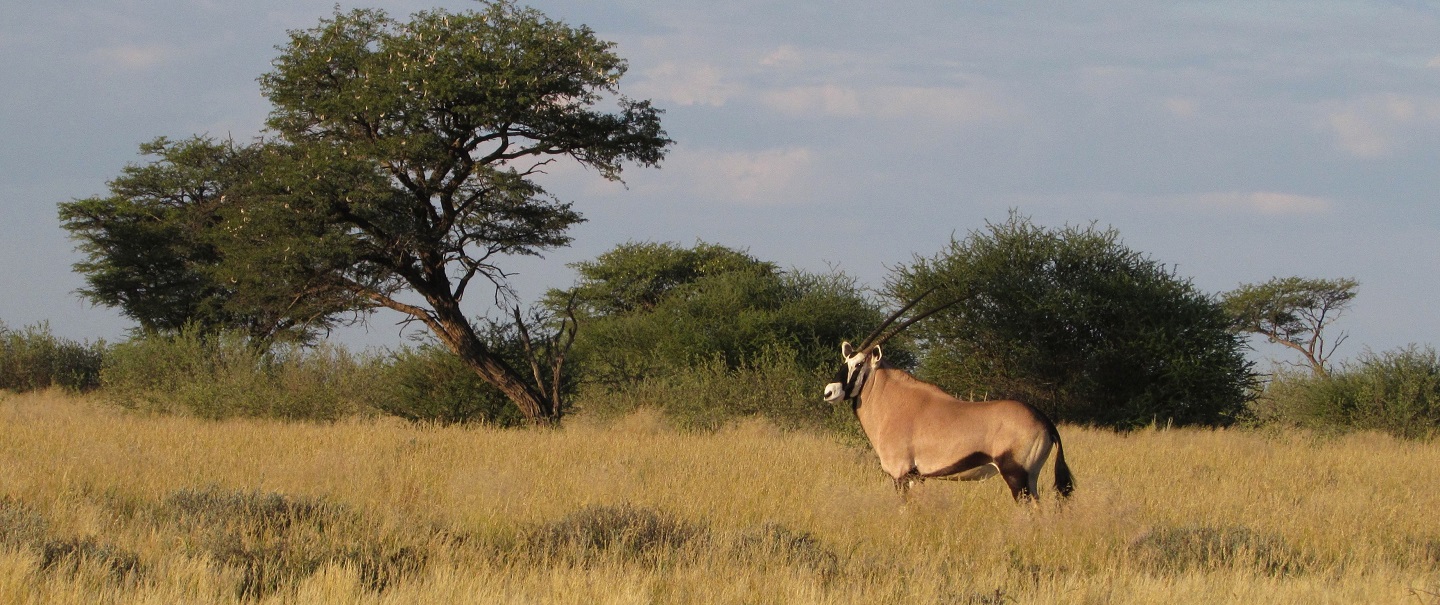More animal grazing in warmer climates threatens ecosystems

A Gemsbok in the Kalahari desert
25 November 2022
Grazing animals in warm and dry parts of the world can damage ecosystems but boost them in cooler drylands, especially when different species feed together, according to new research.
Published in the journal Science, andinvolving an international team including Professor Andrew Thomas from the Department of Geography and Earth Sciences at Aberystwyth University,the findings are the first-ever global field assessment of the ecological impacts of grazing in drylands.
High levels of livestock farming in drylands, has been long considered a threat to biodiversity.
However, grazing sustains the livelihood of billions of people and is tightly linked to many UN Sustainable Development Goals.
It is particularly important in drylands, which cover over 40% of the Earth's land surface, and are home to one in three humans and over half of all livestock on the planet.
Despite the importance of grazing for humans and ecosystems, no previous study has attempted to map its impacts across the world using field data.
An international team of more than 100 researchers conducted a unique global survey in 326 drylands located in 25 countries from six continents.
According to the study, increased grazing had a mainly positive impact in colder drylands with a lower rainfall seasonality and higher plant species richness, but was negative in hotter drylands with lower plant diversity and higher rainfall seasonality.
Professor Andrew Thomas from Aberystwyth University, who led the fieldwork in the Kalahari desert in southern Africa, commented:
“These findings are very important: around a billion people in drylands rely on grazing for their income or food. The study challenges the assumption that such grazing is always bad for the environment.
“There is no one-size-fits-all when it comes to grazing in drylands. The impacts of grazing will vary across the globe, making it important to consider local conditions when managing livestock and wild herbivores.
“Carbon stocks decreased and soil erosion increased as climate became warmer under high grazing pressure, something that was not observed under low grazing pressure. These results suggest that the response of drylands to ongoing climate change may depend on how they are managed locally.”
The findings should also help manage grazing more sustainably and mitigate the impact of climate change and desertification across global drylands.
Professor Fernando T. Maestre, director of the Dryland Ecology and Global Change Laboratory at the University of Alicante, commented:
“We used standardised protocols to assess the impacts of increasing grazing pressure on the capacity of drylands to deliver nine essential ecosystem services, including soil fertility and erosion, forage/wood production and climate regulation. Doing so allowed us to characterize how the impacts of grazing depend on local climatic, soil and local biodiversity conditions, and to gain additional insights on the role of biodiversity on the provision of ecosystem services essential to sustain human livelihoods.”
Researchers found that the relationships between climate, soil conditions, biodiversity and the ecosystem services measured varied with grazing pressure.
The authors also showed that the diversity of both vascular plants and mammals that are herbivores had a positive link to ecosystem health, such as carbon storage, which plays a fundamental role in climate regulation. Professor Thomas added:
“The results clearly highlight the importance of preserving the biodiversity of global drylands in its entirety, not only to conserve their ability to deliver essential services for humans, but also to mitigate climate change”
This work was carried out as part of the BIODESERT project, awarded by the Consolidator Grant program of the European Research Council. Professor Maestre said:
“I am very grateful to the ERC for supporting this global survey, as such a high risk-high gain project would have not been possible without the generous funding and freedom that comes with an ERC grant. And of course, it would not have been possible without our network of international collaborators, who provided their expertise, resources, and work to survey sites in their respective study areas. The BIODESERT survey also provides a very nice example of the power of global and collaborative research networks to conduct frontier research.”



